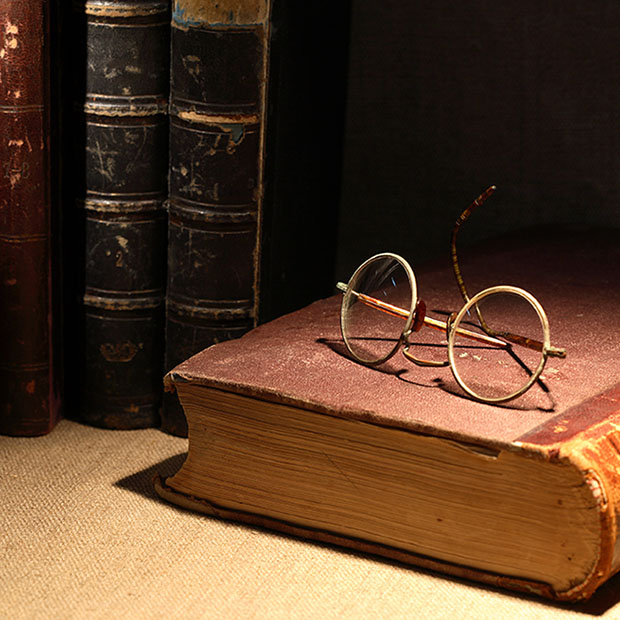The Long Journey to Modern Glasses

When patients walk into your practice today, they enjoy the benefits of modern technology.
That means precision measurements, digital lens surfacing, and frames that combine durability with style. It’s easy to forget that the sophisticated eyewear we prescribe represents centuries of innovation.
Ancient Beginnings
The story of glasses begins with gradual discovery. Ancient civilizations recognized that curved glass could magnify objects. Roman philosopher Seneca reportedly used a glass globe filled with water to enlarge text around 65 AD. But wearable glasses? Those didn’t arrive until the late 13th century in Italy, when someone crafted the first “rivet spectacles” — two magnifying lenses connected by a rivet that perched precariously on the nose.
Centuries of Discomfort
For hundreds of years, glasses remained crude and impractical. Temples weren’t invented until the early 1700s. Before then, users held their spectacles, balanced them on their noses, or attached them with ribbons. The lenses themselves were equally problematic. Ground by hand from glass or quartz, they often contained imperfections that distorted vision rather than corrected it.
The Age of Innovation
The 18th and 19th centuries brought real transformation. Benjamin Franklin developed bifocals in the 1780s, recognizing that presbyopic patients needed both distance and near correction. This represented a fundamental shift — vision correction could be customized to individual needs. Meanwhile, advances in glass manufacturing allowed for more precise lens grinding and better optical clarity.
The Modern Revolution
The 20th century changed everything. Bernard Maitenaz invented progressive lenses in 1955, eliminating the visible bifocal line. Plastic lenses emerged as lighter, safer alternatives to glass. Anti-reflective coatings reduced glare. Photochromic lenses offered unprecedented convenience.
Today’s Technology
Modern optometric practice showcases remarkable innovation. Digital free-form surfacing allows customization down to individual eye aberrations. High-index materials provide thin lenses even for strong prescriptions. Blue light filtering addresses digital device concerns. Frame materials range from titanium to carbon fiber to 3D-printed custom designs.
The Constant Through Change
Perhaps the most remarkable aspect? The fundamental principle remains unchanged. Whether 13th-century rivet spectacles or today’s digitally surfaced progressives, glasses work by bending light to compensate for refractive errors. What has evolved is our ability to do this with unprecedented precision, comfort, and style.
Our Professional Legacy
As optometrists, understanding this history enriches our appreciation for our craft. Each pair of glasses we prescribe represents not just current technology, but centuries of human ingenuity dedicated to helping people see clearly.